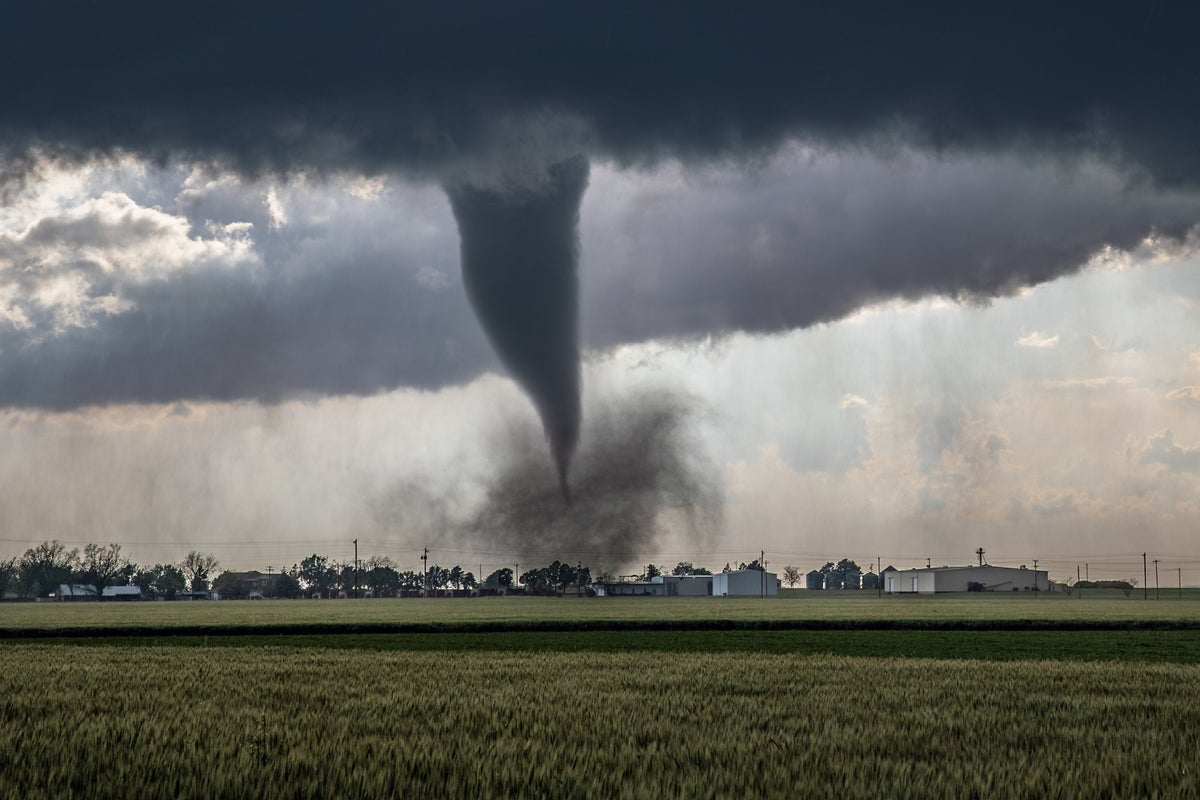The New Tornado Alley Has Been Hyperactive this Year
More tornadoes than usual have already struck the U.S. in 2025—and many of them have been touching down farther east than they had in the past
EF2 tornado lofting debris from a home in Lockett, Texas.
Join Our Community of Science Lovers!
By last Saturday, the National Weather Service reported that 552 tornadoes had occurred in the U.S. this year—well above the average total of 337 for the period of January through April in 1991–2020. Then an outbreak struck Texas and Oklahoma on Saturday night, killing at least three people. Parts of those two states were at the center of the twister-prone “tornado alley” for most of the 1900s, but this well-known corridor has been shifting steadily eastward in the past three and a half decades. This year many of the touchdowns that caused deaths occurred in Mississippi, Alabama and Tennessee, all east of the old alley.
In 2023 Scientific American created a map, based on a then new extensive study to show the shift in large tornado outbreaks.
If you’re enjoying this article, consider supporting our award-winning journalism by subscribing. By purchasing a subscription you are helping to ensure the future of impactful stories about the discoveries and ideas shaping our world today.
Far more tornadoes strike the U.S. than any other country, and this is because of its geography. Wet, westerly winds from the Pacific Ocean become dry as they pass over the the Rocky Mountains, then become high and cool as they blow farther east. Meanwhile warm, humid air streams northward from the Gulf of Mexico, moving at a lower elevation. Flat terrain along these paths allows the two streams to run into each other. The angles at which they collide tend to create unstable air and wind shear—two big factors that favor tornado formation.
For decades, most of the largest outbreaks occurred across northeastern Texas, eastern Oklahoma, and western Arkansas and Missouri. But between 1989 and 2019, the focus shifted eastward by 400 to 500 miles, covering western Kentucky and Tennessee plus northern Mississippi and Alabama.
Most tornadoes are created by a supercell—a strong thunderstorm with a rotating updraft of air. Supercells tend to form when warm, humid, low-level air interacts with cool, dry, higher air. And climate change is now generating more of that warmer, moister air. Tornadoes also are more likely to develop when the local atmosphere is unstable, and warming increases instability. Climate change is warming the Gulf of Mexico as well, and this can send generous amounts of water vapor into the southeastern U.S.—farther east than it tended to travel decades ago. In addition, climate change has moved the rough north-south boundary between dry western U.S. air and moist, eastern U.S. air about 140 miles to the east.
Tornado shelters are common in Texas and Oklahoma but less so in other U.S. regions. The Southeast is more densely populated, and mobile homes (which often fare poorly in windstorms) are prevalent. Tornadoes in the Southeast also occur at night more often than those that strike farther west do, in part because winds can bring ample moisture from the Gulf after dark. And nighttime makes it much harder to see a storm coming.
Mark Fischetti has been a senior editor at Scientific American for 17 years and has covered sustainability issues, including climate, weather, environment, energy, food, water, biodiversity, population, and more. He assigns and edits feature articles, commentaries and news by journalists and scientists and also writes in those formats. He edits History, the magazine’s department looking at science advances throughout time. He was founding managing editor of two spinoff magazines: Scientific American Mind and Scientific American Earth 3.0. His 2001 freelance article for the magazine, “Drowning New Orleans,” predicted the widespread disaster that a storm like Hurricane Katrina would impose on the city. His video What Happens to Your Body after You Die?, has more than 12 million views on YouTube. Fischetti has written freelance articles for the and many others. He co-authored the book Weaving the Web with Tim Berners-Lee, inventor of the World Wide Web, which tells the real story of how the Web was created. He also co-authored The New Killer Diseases with microbiologist Elinor Levy. Fischetti is a former managing editor of IEEE Spectrum Magazine and of Family Business Magazine. He has a physics degree and has twice served as the Attaway Fellow in Civic Culture at Centenary College of Louisiana, which awarded him an honorary doctorate. In 2021 he received the American Geophysical Union’s Robert C. Cowen Award for Sustained Achievement in Science Journalism, which celebrates a career of outstanding reporting on the Earth and space sciences. He has appeared on NBC’s Meet the Press, CNN, the History Channel, NPR News and many news radio stations. Follow Fischetti on X (formerly Twitter) @markfischetti
Source: www.scientificamerican.com
